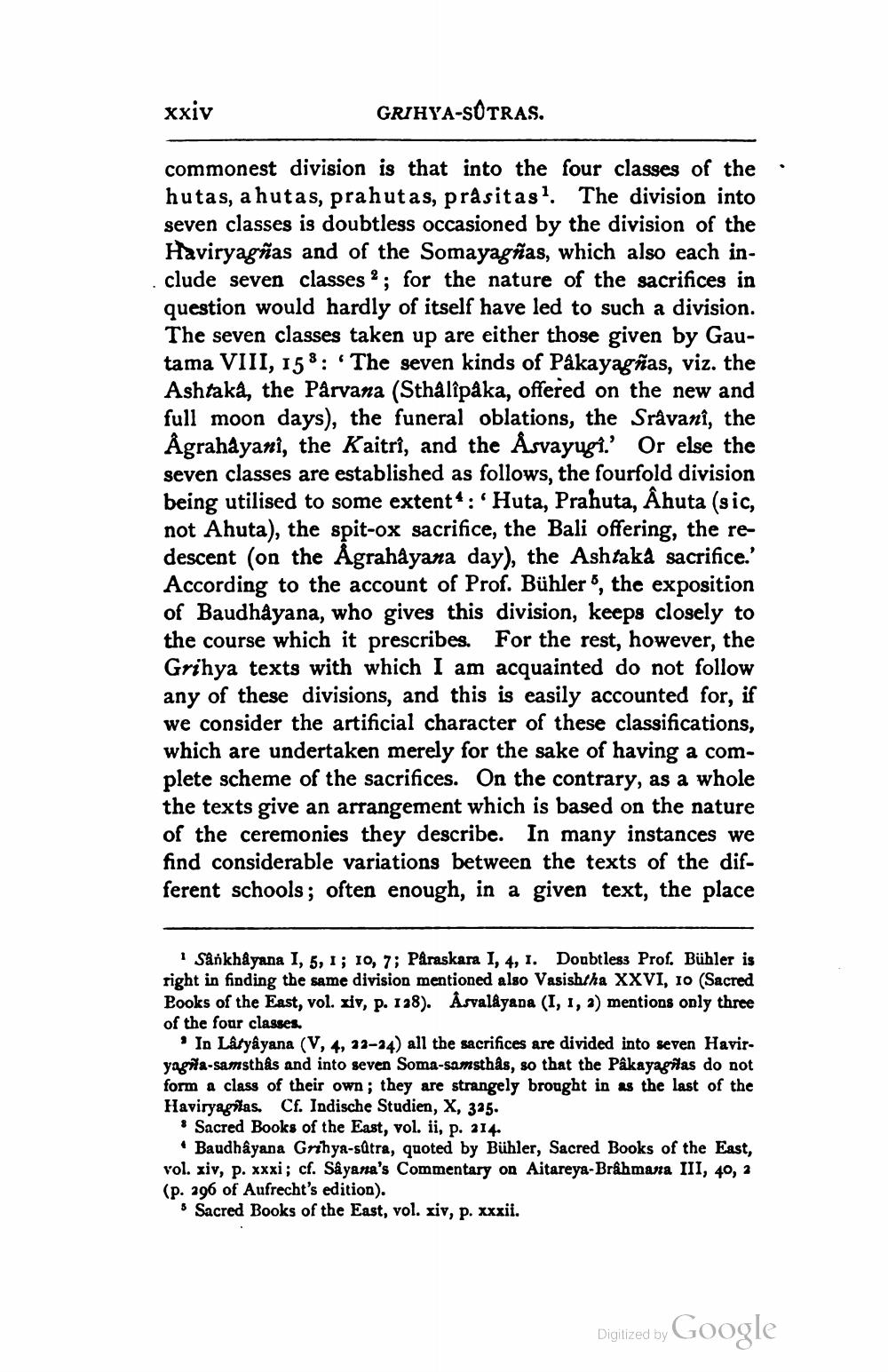________________
xxiv
GRIHYA-SOTRAS.
commonest division is that into the four classes of the hutas, a hutas, prahutas, prasitas1. The division into seven classes is doubtless occasioned by the division of the Haviryagñas and of the Somayagñas, which also each include seven classes ? ; for the nature of the sacrifices in question would hardly of itself have led to such a division. The seven classes taken up are either those given by Gautama VIII, 158: The seven kinds of Pakayagñas, viz. the Ashtaka, the Pârvana (Sthâlipáka, offered on the new and full moon days), the funeral oblations, the Srâvani, the Ågrahayani, the Kaitri, and the Åsvayugt.' Or else the seven classes are established as follows, the fourfold division being utilised to some extent: 'Huta, Prahuta, Åhuta (sic, not Ahuta), the spit-ox sacrifice, the Bali offering, the redescent (on the Ågrahayana day), the Ashtaka sacrifice.' According to the account of Prof. Bühler, the exposition of Baudhayana, who gives this division, keeps closely to the course which it prescribes. For the rest, however, the Grihya texts with which I am acquainted do not follow any of these divisions, and this is easily accounted for, if we consider the artificial character of these classifications, which are undertaken merely for the sake of having a complete scheme of the sacrifices. On the contrary, as a whole the texts give an arrangement which is based on the nature of the ceremonies they describe. In many instances we find considerable variations between the texts of the different schools; often enough, in a given text, the place
Sankhiyana 1, 5, 1; 10, 7; Påraskara 1, 4, 1. Doubtless Prof. Bühler is right in finding the same division mentioned also Vasishtha XXVI, 10 (Sacred Books of the East, vol. xiv, p. 138). Åsvaldyana (I, 1, ) mentions only three of the four classes.
• In Latyâyana (V, 4, 12-14) all the sacrifices are divided into seven Haviryagila-samsthas and into seven Soma-samsthås, so that the Pâkayagilas do not form a class of their own; they are strangely brought in as the last of the Haviryągilas. Cf. Indische Studien, X, 325.
Sacred Books of the East, vol. ii, p. 214. . Baudhâyana Grihya-sútra, quoted by Bühler, Sacred Books of the East, vol. xiv, p. xxxi; cf. Sayana's Commentary on Aitareya-Brahmana III, 40, 2 (p. 296 of Aufrecht's edition).
Sacred Books of the East, vol. xiv, p. xxxii.
Digilized by Google




